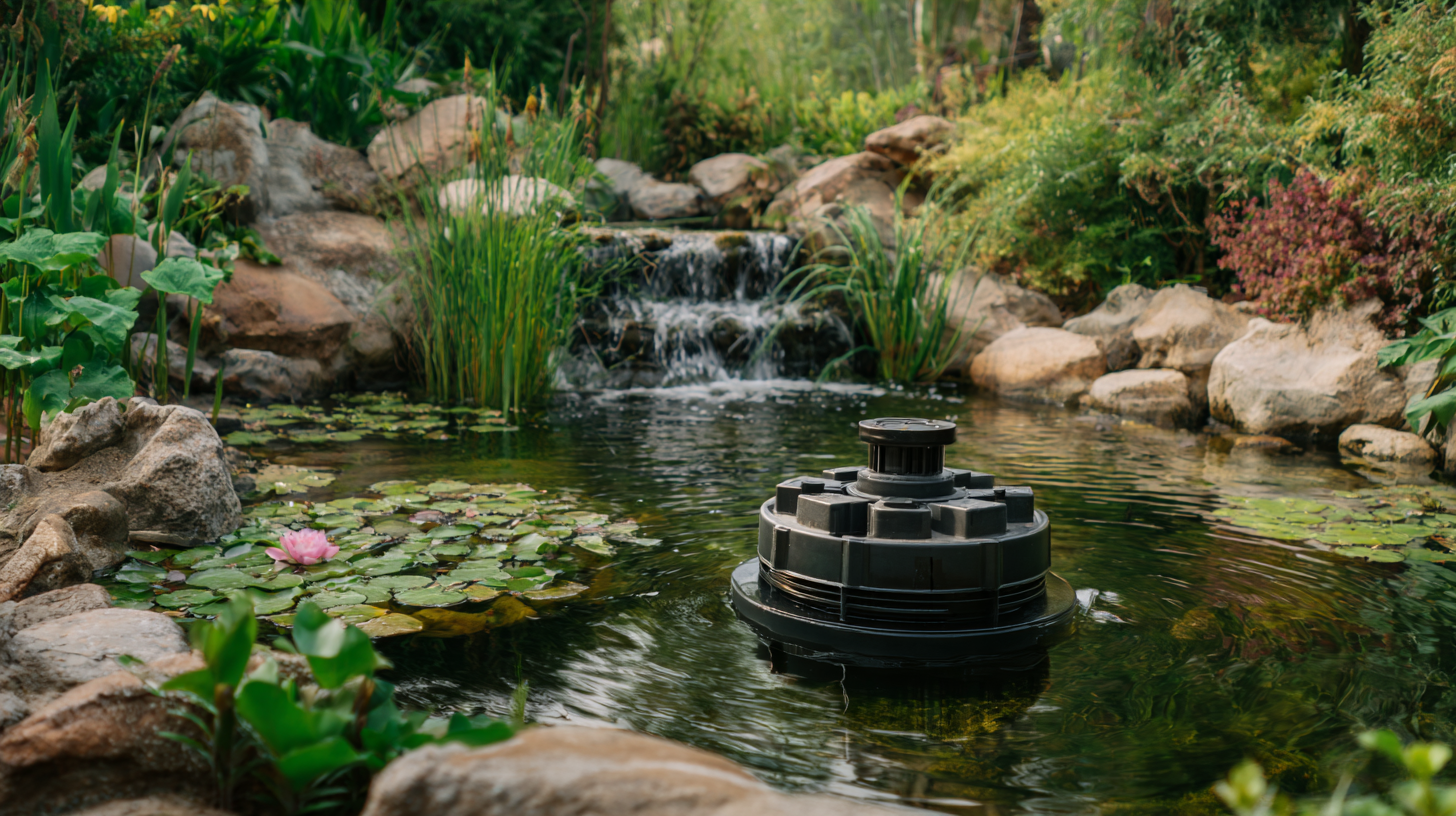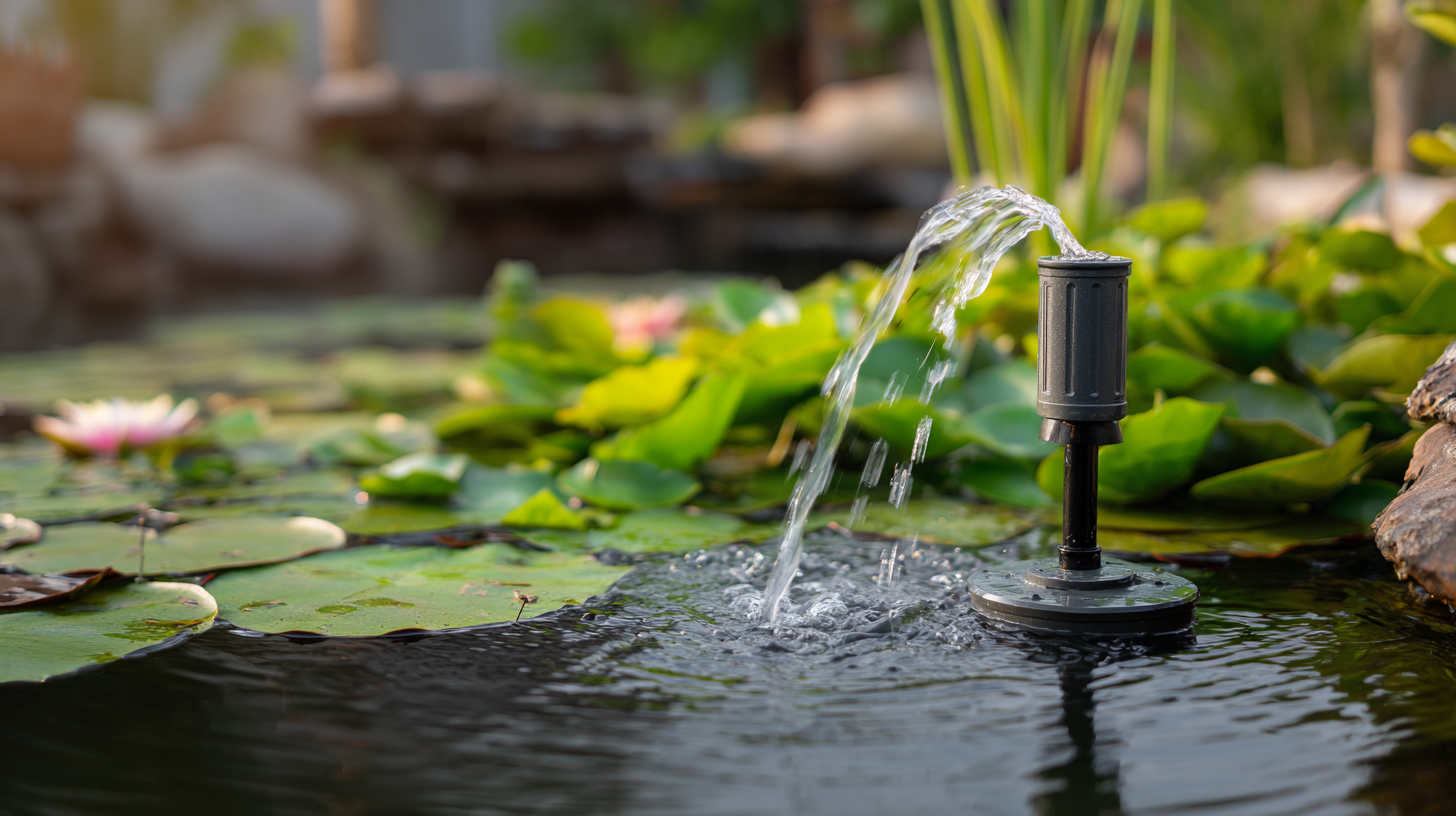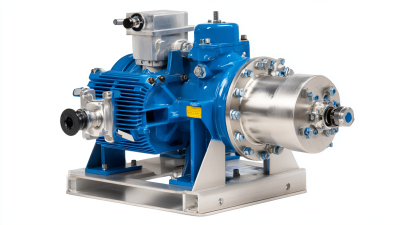Maximize Your Pond's Health: Expert Insights on Fountain Pump Efficiency and Eco-Friendly Choices
As the demand for sustainable water features continues to rise, understanding the efficiency of fountain pumps has become paramount for pond health and ecological balance. According to a recent study by the Water Environment Federation, up to 60% of energy consumption in ornamental water systems can be attributed to inefficient pump operations. By optimizing fountain pump performance, pond owners can not only reduce energy costs but also enhance the overall aquatic ecosystem. Notably, eco-friendly choices such as energy-efficient pumps and solar-powered alternatives have seen a 30% increase in adoption among environmentally-conscious consumers. This guide aims to provide valuable insights and actionable tips on maximizing your pond's health through the selection and use of fountain pumps, ensuring both an aesthetically pleasing environment and a commitment to sustainability.

Maximizing Water Circulation: Choosing the Right Fountain Pump Size
Choosing the right size for your fountain pump is crucial to maximizing water circulation in your pond. A properly sized pump ensures adequate flow rates, which not only keeps the water moving but also helps to maintain optimal oxygen levels. When selecting a pump, consider both the pond's volume and the desired water feature's height. Generally, a pump should be capable of circulating the entire volume of water in your pond at least once every two hours. This allows for clean water and a healthy ecosystem, promoting the overall well-being of your aquatic plants and animals.
In addition to size, energy efficiency should also be a key factor in your decision. Eco-friendly pumps that operate on low wattage can significantly reduce your energy consumption while still providing sufficient circulation. Look for pumps with energy-efficient motors or variable speed options, allowing you to adjust flow rates according to your pond's specific needs. By making mindful choices regarding pump size and efficiency, you can enhance your pond's health while also minimizing your environmental footprint.
Energy Efficiency in Fountain Pumps: Key Features to Consider
When selecting a fountain pump for your pond, energy efficiency should be a top priority. Not only does an efficient pump reduce energy costs, but it also minimizes the environmental impact. Look for pumps that feature variable speed settings, as these allow you to adjust the flow rate based on your pond's needs, optimizing energy use. Additionally, consider pumps with design features like magnetic drive technology, which can enhance performance while consuming less power.
Tip: Always check the Energy Star rating of the pump. This certification ensures that the product meets strict energy efficiency guidelines, helping you make a more sustainable choice for your pond.
When considering eco-friendly options, opt for pumps made from recyclable materials that can withstand the elements. Additionally, solar-powered fountain pumps are an excellent alternative for those wanting to reduce their carbon footprint. They harness renewable energy, helping you maintain your pond's aesthetics while contributing to a healthier environment.
Tip: Regular maintenance of your fountain pump can greatly enhance its efficiency. Cleaning the pump and inspecting for debris or obstructions can prevent energy waste and prolong the life of the equipment.
Eco-Friendly Fountain Pump Options: Materials and Technologies That Matter
When considering eco-friendly fountain pump options, the selection of materials and technologies plays a crucial role in promoting sustainability and enhancing pond health. Many modern pumps are now being constructed from renewable resources, such as natural fiber composites, which not only provide durability but also reduce environmental impact. These materials are biodegradable and energy-efficient, making them a perfect choice for individuals seeking to minimize their ecological footprint while maintaining the functionality of their garden features.
Furthermore, innovative technologies are emerging that emphasize energy efficiency and low environmental impact. Incorporating renewable energy sources, such as solar power, can dramatically decrease the operational carbon footprint of fountain pumps. Advances in hydraulic efficiency and the integration of smart monitoring systems allow users to optimize water usage and energy consumption, fostering a healthier aquatic environment. By prioritizing sustainable practices and eco-friendly materials, pond owners can contribute to a greener ecosystem while enjoying the beauty of their water features.

Maintenance Tips for Optimal Pump Performance and Longevity
To ensure optimal pump performance and longevity in your pond, regular maintenance is key. Begin by cleaning the pump filter and impeller regularly to prevent clogs that can impede water flow and decrease efficiency. This can be done every few weeks during peak seasons and less frequently during cooler months. Inspect the electrical connections and cords for any wear and tear, ensuring that everything is secure and functional to avoid unexpected shutdowns.
In addition to physical maintenance, it's important to monitor the pump's performance indicators. Listen for unusual noises that could signal mechanical issues, and check for vibrations that could suggest imbalances. Schedule annual professional inspections to catch potential problems early. Consider eco-friendly alternatives when replacing your pump, such as energy-efficient models or solar-powered options, which can reduce energy costs while maintaining your pond's health. By following these tips, you can maximize your fountain pump's efficiency, ensuring a thriving aquatic environment for years to come.
Enhancing Pond Health Through Strategic Fountain Placement and Water Flow
Strategic placement of your fountain is crucial for maintaining a healthy pond ecosystem. By positioning the fountain near the pond's inflow or areas where natural water circulation occurs, you can enhance water oxygen levels and facilitate better nutrient distribution. This placement minimizes stagnant zones and encourages beneficial microbial activity, essential for breaking down organic matter. Additionally, aligning the fountain to create movement across the water surface helps to deter algae growth, providing a clearer and more aesthetically pleasing environment.

Water flow is another pivotal aspect in enhancing pond health. An appropriately sized and efficient pump not only generates optimal water circulation but also contributes to the overall oxygenation of the pond. This helps support fish and plant life, promoting a balanced ecosystem. It is advisable to regularly adjust the flow rate based on seasonal changes, ensuring that the water features remain effective without overwhelming the aquatic inhabitants. By integrating these strategic practices, pond owners can significantly improve the health and vitality of their aquatic environments while embracing eco-friendly solutions.
Related Posts
-

7 Expert Tips to Choose the Best Fountain Pump for Your Garden Water Feature
-

7 Essential Tips for Choosing the Best Electric Water Pump for Your Needs
-

Ultimate Guide to Choosing the Right Water Pump for Your Needs
-

7 Essential Tips for Choosing the Right Diaphragm Pump for Your Needs
-

Challenges Encountered with Submersible Pumps in Industrial Applications
-

Exploring the Impact of 24v Water Pump Innovations at the 138th China Import and Export Fair 2025